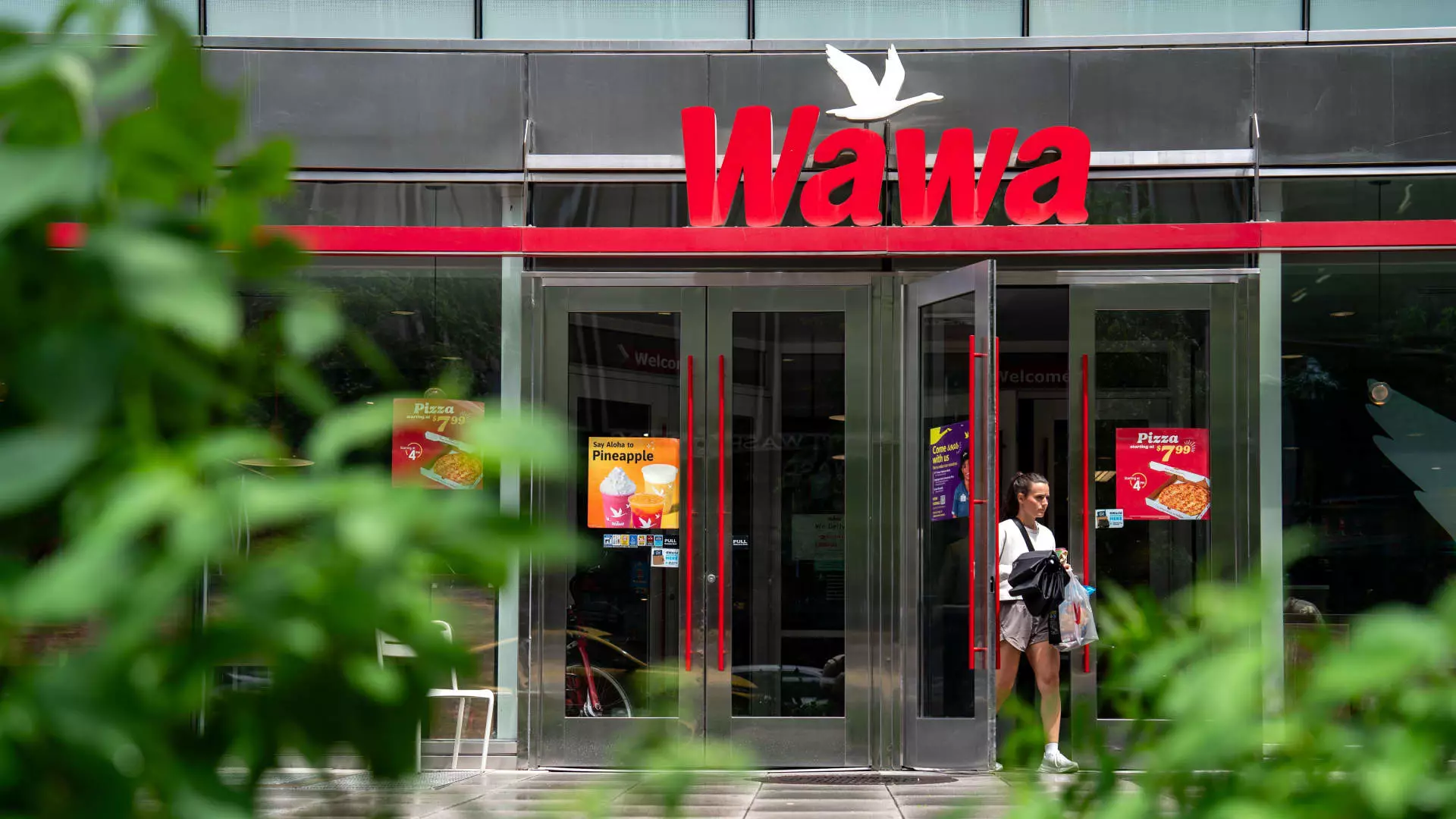In recent years, the breakfast landscape in America has undergone a seismic transformation that starkly reveals the vulnerabilities of traditional fast-food chains. Once kings of early morning convenience, these establishments now face a formidable adversary in the form of convenience stores that are quickly redefining what it means to grab breakfast on the go. This isn’t merely a minor market fluctuation—it’s a fundamental realignment that underscores the evolving consumer mindset in a world increasingly driven by value, variety, and perceived quality.
Fast-food chains have long banked on the notion that their ubiquity and speed would secure their breakfast dominance. However, the surge in breakfast patronage at convenience stores signals more than just a fleeting trend; it highlights a deeper dissatisfaction with how traditional fast-food operators are responding to modern consumer expectations. Convenience stores, particularly those that are “food-forward,” have tapped into a desire for fresher, more diverse, and more competitively priced options while leveraging their strategic locations at fueling stations and busy urban hubs. Their emphasis on tailored, high-quality prepared foods is fundamentally challenging the fast-food model, which often relies on standardized menus and a focus on quick service over excellence.
In this landscape, fast-food operators find themselves increasingly on the defensive, trying to mimic the innovations of their rivals rather than redefining their own approach. The fact that 87% of what Americans consume at breakfast still comes from home suggests that these chains have a significant task ahead if they wish to recapture lost ground. It’s not just about offering a quick Egg McMuffin anymore; it’s about addressing the broader question of whether their offerings align with contemporary tastes and values—cost-effectiveness, health-consciousness, and food quality—embedded deeply into the consumer psyche.
The Diminishing Role of Tradition and the Rise of Convenience Store Powerhouses
The pandemic era temporarily disrupted this shift, with lockdowns and remote work reducing the appeal of convenience stores as breakfast destinations. Yet, this was a mere pause rather than a reversal. As life begins to pulse back to its pre-pandemic rhythm, c-stores have regained momentum. The success of chains like Buc-ee’s, Sheetz, and 7-Eleven in expanding their foodservice offerings demonstrates a clear strategic pivot—focused on preparing fresh, appealing options that rival those of fast-food restaurants. The recent acquisition of Potbelly by RaceTrac exemplifies how convenience stores are not content to be just pit stops anymore; they are becoming full-fledged food destinations.
Consumers are increasingly seeing convenience stores as a viable alternative to fast-food chains, especially as financial pressures mount. Rising menu prices, inflation, and a labor market that keeps a tight grip on wages have made diners scrutinize every dollar spent. This economic reality is a natural ally to convenience stores, whose reputation for offering an impressive variety of affordable, made-to-order options—be it a breakfast sandwich, energy drink, or yogurt—resonates with budgets squeezed tighter than ever.
What’s more startling and perhaps most damaging to fast-food breakfast market share is the perceivably superior variety and perceived value that convenience stores provide. From energy drinks to healthy snack options, c-stores now serve as mini-marts that cater to the modern consumer’s desire for customization and freshness. This isn’t merely about price; it’s about the experience. Consumers want to feel that they’re making a smart choice, getting good value for their money, and enjoying a meal that aligns with their health goals or taste preferences.
The Decline of Traditional Fast-Food Breakfasts: A Wake-Up Call for Industry Leaders
The decline in breakfast traffic to quick-service restaurants isn’t happening in isolation; it reflects a broader shift in priorities and perceptions. For industry giants like McDonald’s, which once dominated the breakfast scene, these shifts pose serious strategic questions. McDonald’s, for instance, saw its breakfast segment’s share of traffic fall from over a third of total visits in 2019 to under 30% by mid-2025. That’s a significant erosion of a once core revenue segment, driven by consumers who are increasingly choosing convenience store options that offer more varied and fresher choices.
The industry’s response has been somewhat reactive rather than innovative. Limited-time offers and value deals attempt to lure consumers back, but they often lack the freshness, variety, and perceived quality that today’s discerning breakfast customers seek. The core issue is that fast-food chains continue to view breakfast purely as a sales window rather than an opportunity to reimagine the morning eating experience.
Meanwhile, convenience stores are flourishing by harnessing their strategic locations—near gasoline stations, workplaces, and residential areas—to enable on-demand, made-to-order breakfasts. Their success in eating away at fast-food breakfast traffic reveals a crucial failure of traditional chains to adapt proactively. This is a clarion call for industry leaders: staying anchored in legacy menus and outdated service models spells trouble in a competitive environment that rewards innovation and authenticity.
A Future Rewritten by Consumer Demand for Authenticity and Choice
The key takeaway from these shifts is a clear signal to fast-food companies: no longer can they rely solely on their brand power or convenience-focused marketing. Today’s consumers crave authenticity, variety, and value that matches their busy, budget-conscious lifestyles. Convenience stores are capitalizing on this by promoting fresh, made-to-order fare and creating a perception of smarter spending.
What remains to be seen is whether fast-food chains can elevate their breakfast offerings to meet these modern standards—by investing in quality ingredients, expanding menu options, and embracing a more personalized customer experience. If they fail to adapt, they risk not just losing market share in the morning slot but diminishing their relevance altogether in a landscape that celebrates dynamic, consumer-centric foodservice.
In the end, the battle for breakfast supremacy isn’t just about food — it’s about understanding the changing fabric of consumer values and needs. What once seemed like a straightforward choice between quick and cheap has now evolved into a complex dance of quality, convenience, and price. The future favors those who recognize that breakfast isn’t just a meal; it’s an opportunity to forge deeper connections with customers seeking more than just a quick bite.

